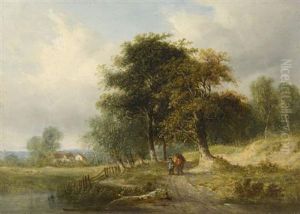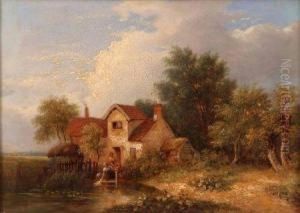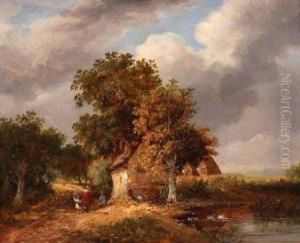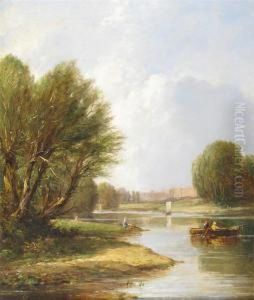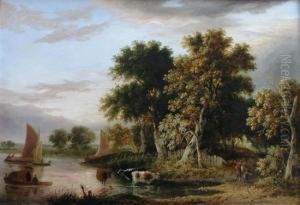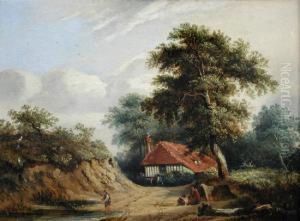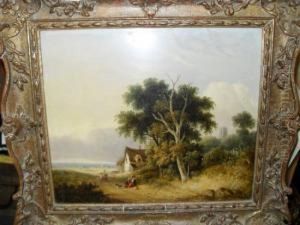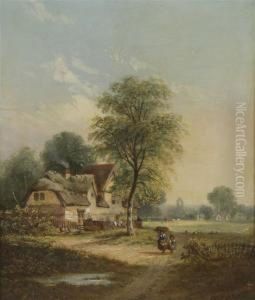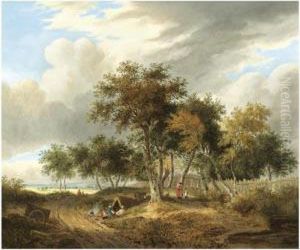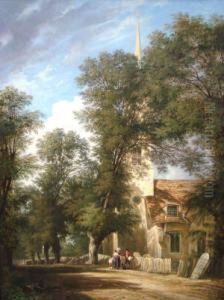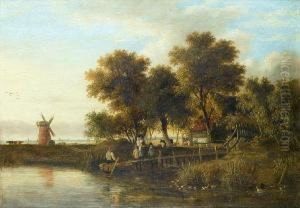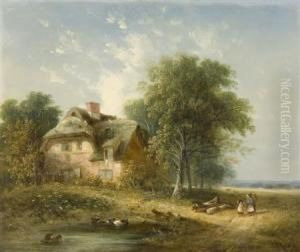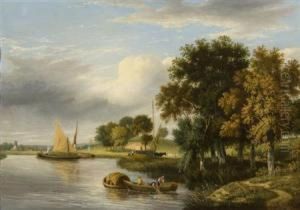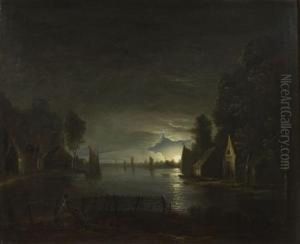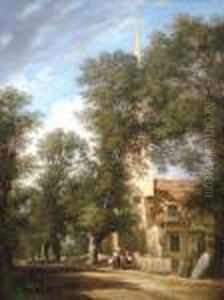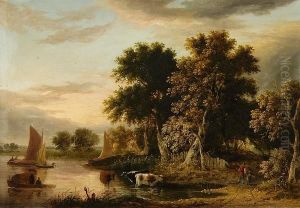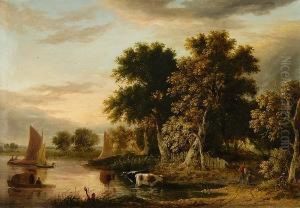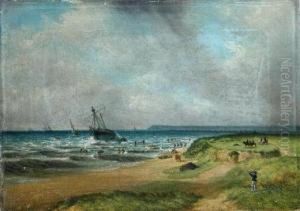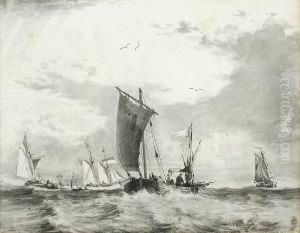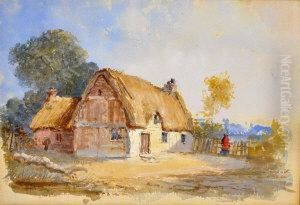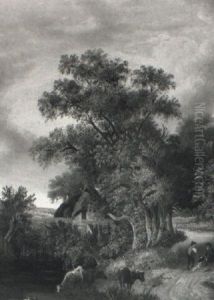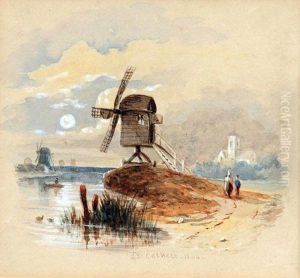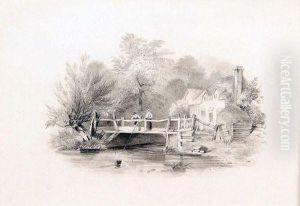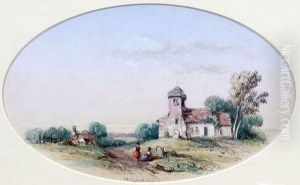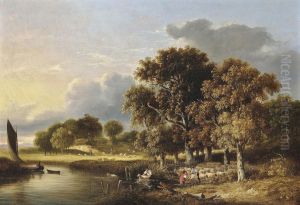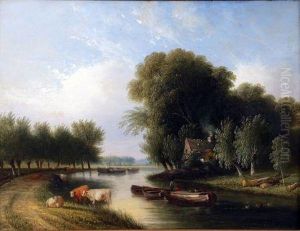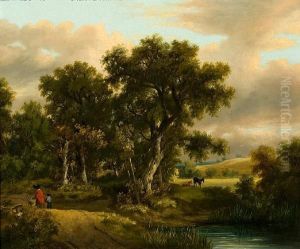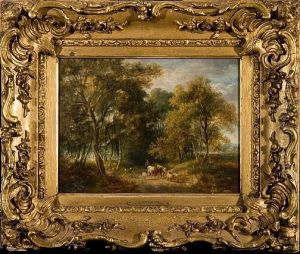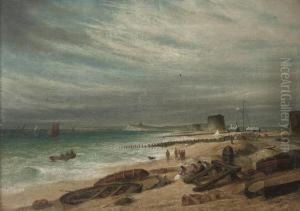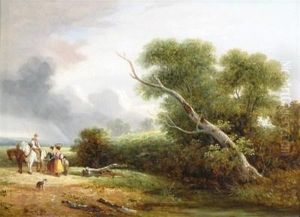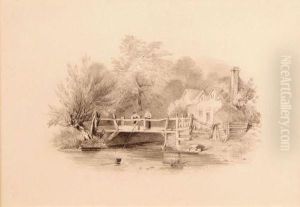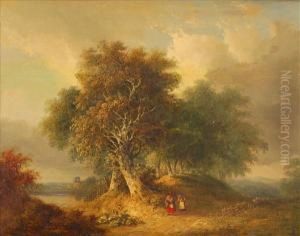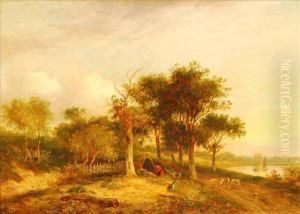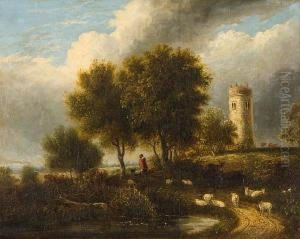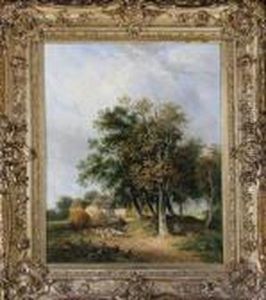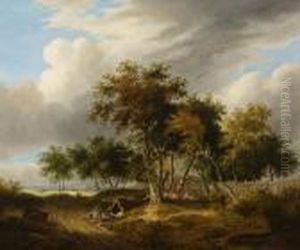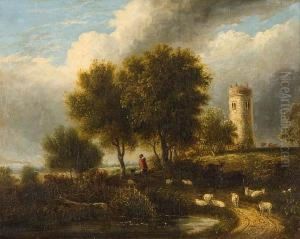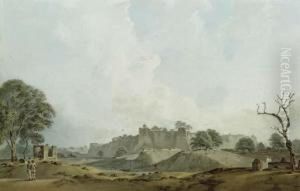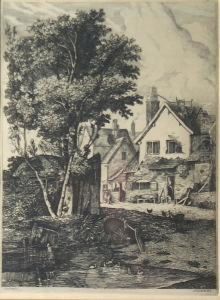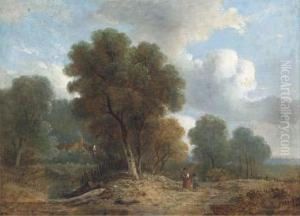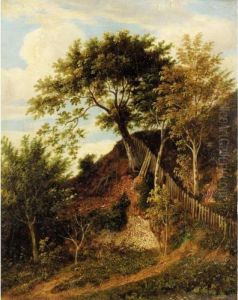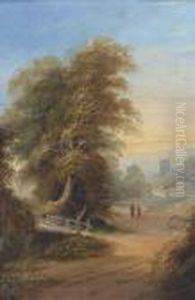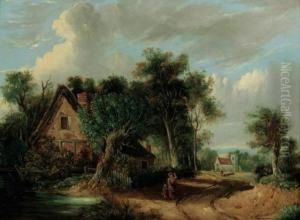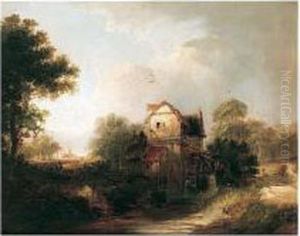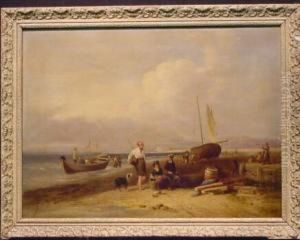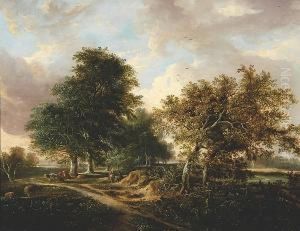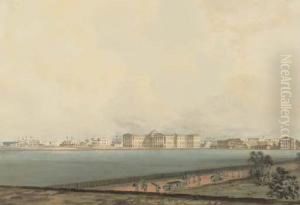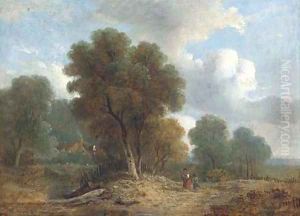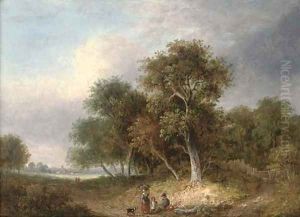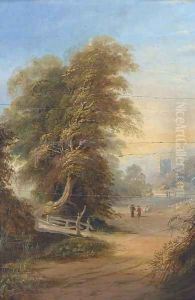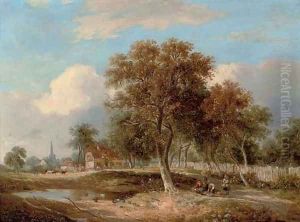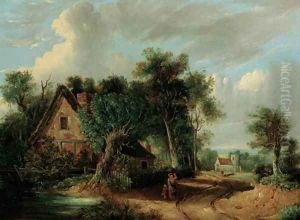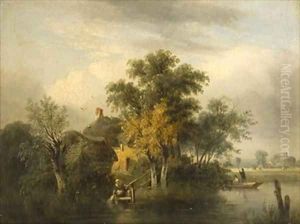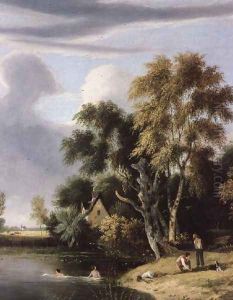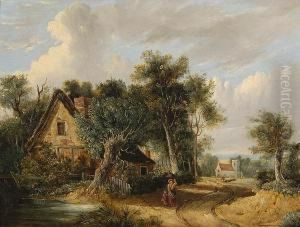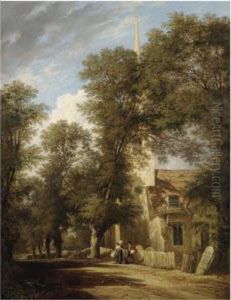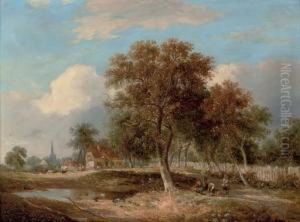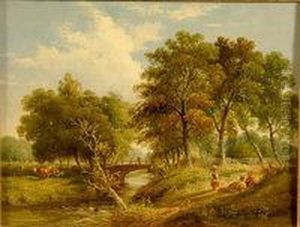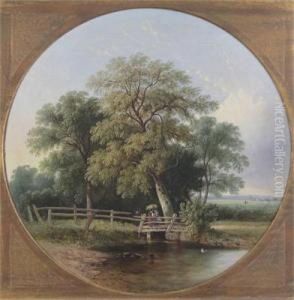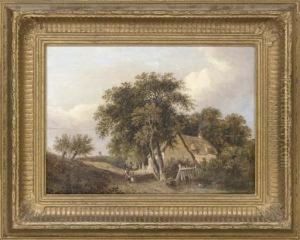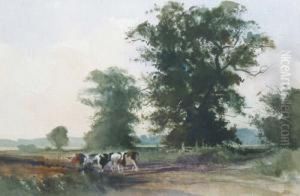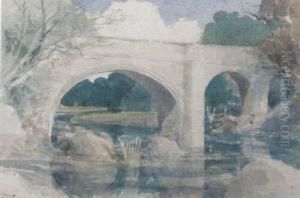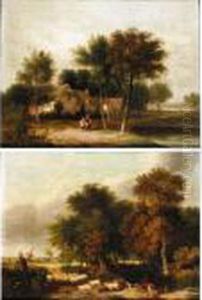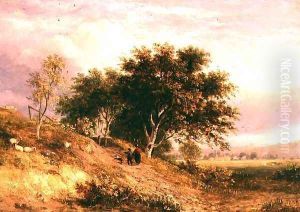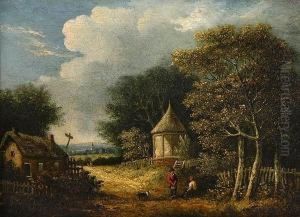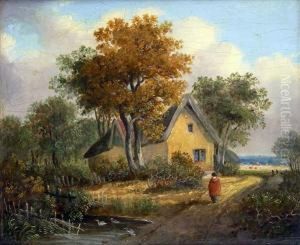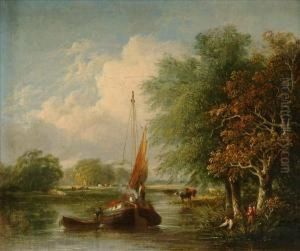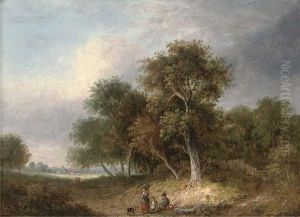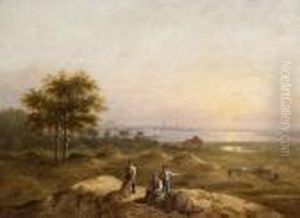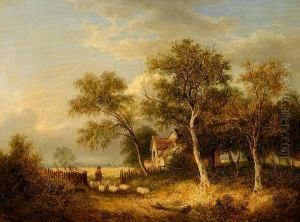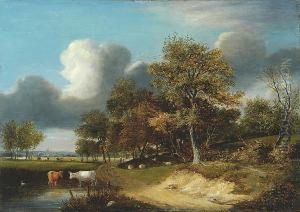Samuel David Colkett Paintings
Samuel David Colkett was an English landscape painter born on August 18, 1800, in Norwich, England. As a member of the Norwich School of painters, he was part of a movement that was heavily influenced by the natural beauty of the Norfolk countryside and was one of the first groups to emerge outside London that focused on the depiction of the local environment.
Colkett showed an early aptitude for art and was apprenticed to the Norwich School's leading artist, John Crome, who was also known as 'Old Crome' to distinguish him from his son, John Berney Crome. Under Crome's guidance, Colkett developed his skills in landscape painting, paying close attention to the nuances of light and atmosphere that would come to characterize his work.
Although Colkett's style was rooted in the Norwich School tradition, he also exhibited at the British Institution and the Royal Academy, suggesting that his work was well received and had a reach beyond his local area. Colkett's landscapes often depicted the English countryside, but unlike some of his contemporaries, he occasionally ventured into more romantic and sublime territory, perhaps influenced by other movements of the time, such as Romanticism.
Colkett's paintings are characterized by their detailed foregrounds and expansive skies, which often dominate his compositions. He had a particular penchant for capturing the effects of light on water and the play of shadows across the land, which lends his paintings a lyrical and sometimes dramatic quality.
Despite his talents, Colkett did not achieve the same level of fame as some of his contemporaries, such as John Constable or J.M.W. Turner, but his work has been appreciated by collectors and connoisseurs of the Norwich School. Samuel David Colkett continued to paint throughout his life, contributing to the legacy of the Norwich School and its celebration of the English landscape.
Colkett died on July 19, 1863, in Yarmouth, leaving behind a body of work that continues to be recognized for its contribution to English landscape painting. His paintings can be found in various art collections, including those of museums in the United Kingdom, where they serve as a testament to the skill and vision of this Norwich School artist.
